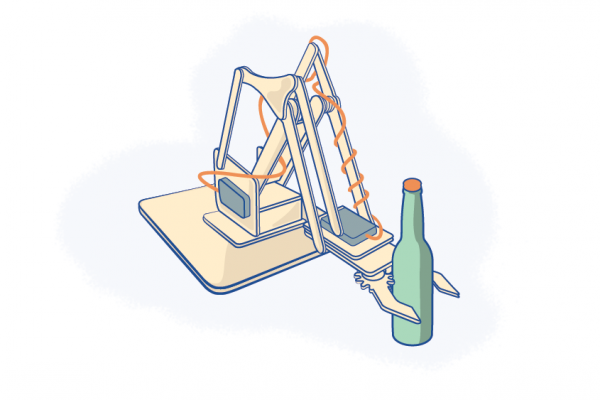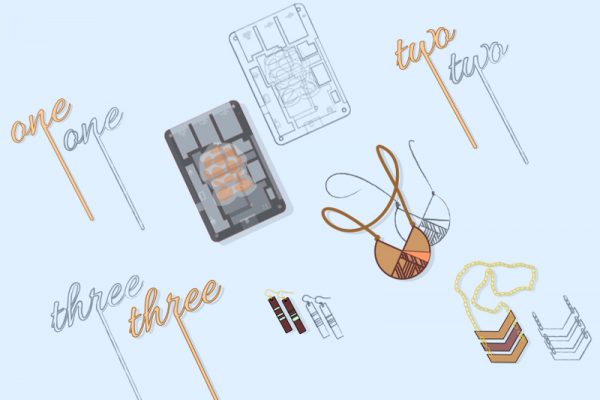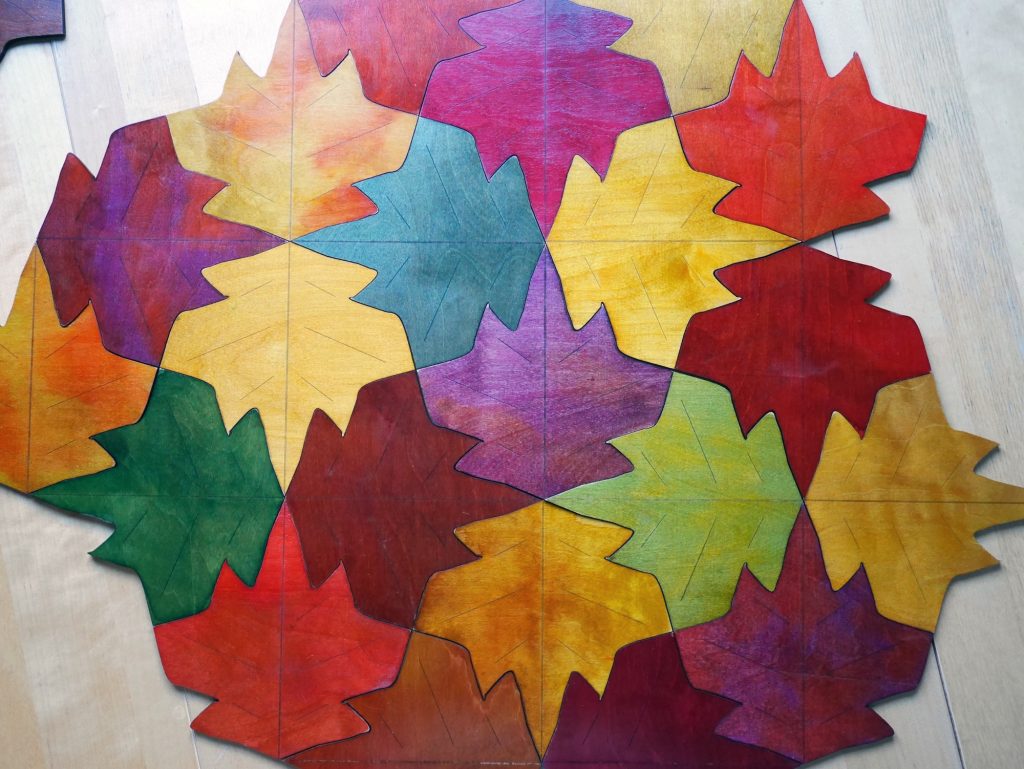
Quirkshop Designs Combines Left And Right Brain Creativity To Make Tessellated Leaf Coasters
A statistician working in cancer research, Jane Lange may spend her days crunching numbers with her left brain. But in her free time, she turns her right brain loose with her love of art, interior decorating, crafting and design that she chronicles at Quirkshop Designs.
“When I was in graduate school completing my PhD, I found that crafting and creating were great outlets,” she explains. “There’s something about making pretty tactile things that is so satisfying after a day of debugging code.”
The laser cutter’s guide to graphic design principles & elements
Everything you need to know about graphic design principles & elements.
With this background, it’s not much of a surprise to see Jane’s left brain and right brain sensibilities come together on her latest maker project: A set of brilliantly dyed tessellated leaf coasters.
Translating Tessellations
Tessellations are identical, repeating shapes that fit together without any gaps or overlaps to tile a surface. In the simplest terms, a tessellation is a mosaic. Like a checkerboard. Here’s how it works:
In the most complex forms, tessellations can turn into seemingly impossible works of art such as these by the renowned graphic artist M.C. Escher.
Finding Inspiration
Like many artists, Jane often turns to nature for inspiration. And no wonder; nature is full of designs that combine beauty with geometry. Just look at the repeating patterns in honeycombs, snowflakes and shells to the symmetry in flower petals and plant leaves.
“I am very much influenced by my natural surroundings in Washington, and I love color and pattern,” Jane says. “Seattle has had such an amazing fall this year, and all the colors have been very inspiring. So when I found this leaf walking home from work, I knew I finally had a great idea for laser cut tessellations,” Jane says.
While Jane says she has wanted to make tessellated coasters for some time, she wasn’t sure how to get it done. While most of her design work is done in Inkscape, it was just too time-consuming to create this kind of precision pattern by hand. “Once I found a good software program to design tessellations (TesselManiac), I knew it was time to give it a shot,” she says.
Crafting The Coasters
“The idea is that you can use one piece individually as a coaster or connect a group of them for a table display,” she says. “Because they interlock in so many ways, you are able to change up the display in countless ways.”
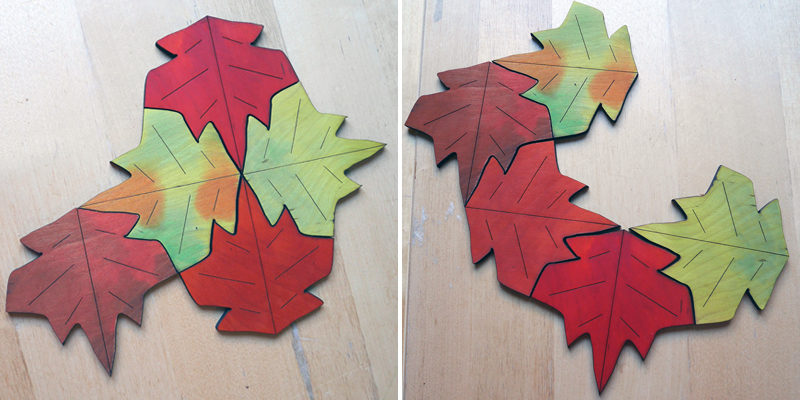
Once Jane finalized her design, she chose ¼-inch birch plywood as the coasters’ substrate. “While my boyfriend I and have used a jigsaw for similar piecework, laser cutting is much better suited for this task since you can cut things with extreme precision,” she says. “It’s important that each leaf be identical so that they all fit together perfectly.”
While the birch coasters would have been pretty all on their own, Jane wanted to capture the beautiful color palette of a forest floor covered in fallen leaves.
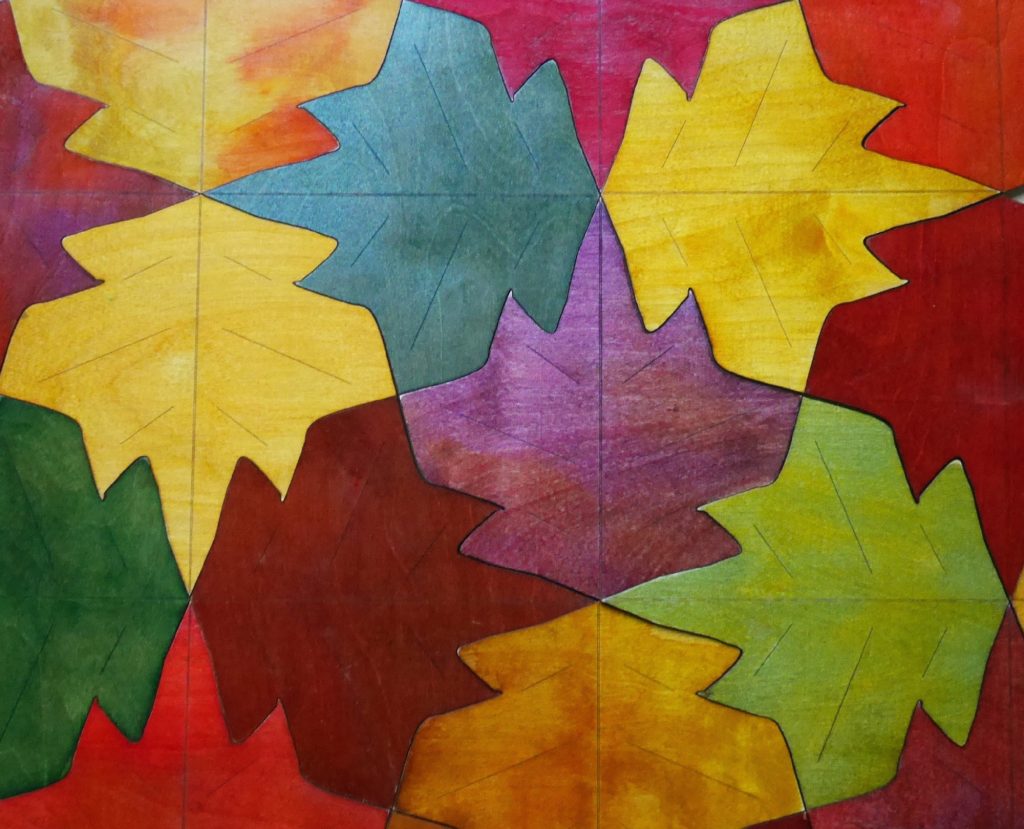
To create this effect, she used acid-based fabric dyes found at any craft store (such as this Jacquard Products Procion MX Dye). “Unlike painted surfaces, dyed wood allows the wood grain to shine through,” she explains. “The birch wood is light enough to take the dye well. Then the coasters are covered with an oil-based polyurethane to waterproof and for durability.”
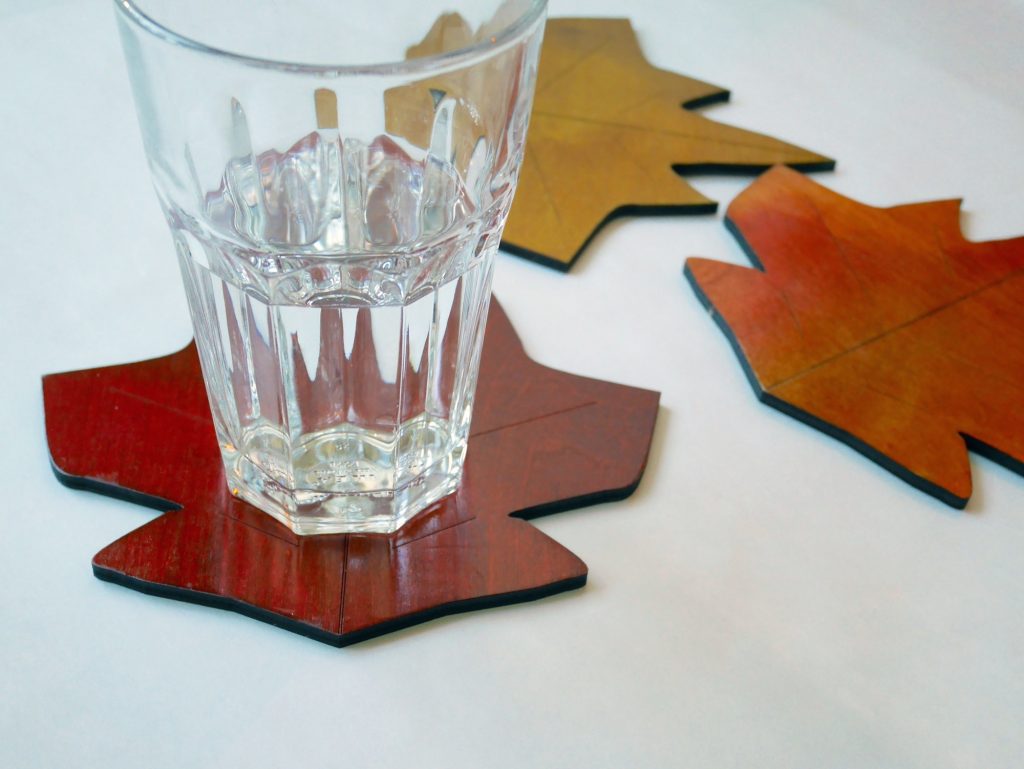
Working With Ponoko
Jane learned about laser cutting several years ago through a local maker space. “I found out about Ponoko by searching for a lower cost alternative so that my projects wouldn’t be prohibitively expensive,” she says. “Incidentally, creating tessellating patterns is quite cost efficient since you don’t waste any cuts or material.
“Ponoko offered a combination of good pricing, a wide variety of materials and demonstrated quality,” she continues. “It was great to know upfront how much a design would cost. And I was particularly pleased that a masking paper was used on the wood so any burn marks are minimal.”
Making Designs Her Own
Once Jane has the tessellated coasters laser cut, she takes them to her studio space (aka the Quirkshop Workshop) in Fremont, Washington, to apply the dye—which can sometimes be a humorous experience.
“As I was mid-creation, a girl, who was about 10 years old, showed up on her scooter,” Jane says. “She first asked me if I was a scientist, then if I was a famous artist. I said no to both, although I am somewhat of a scientist in my real job! I must have looked kinda crazy with all the dyes out, wearing a utility jumpsuit and a face mask.”
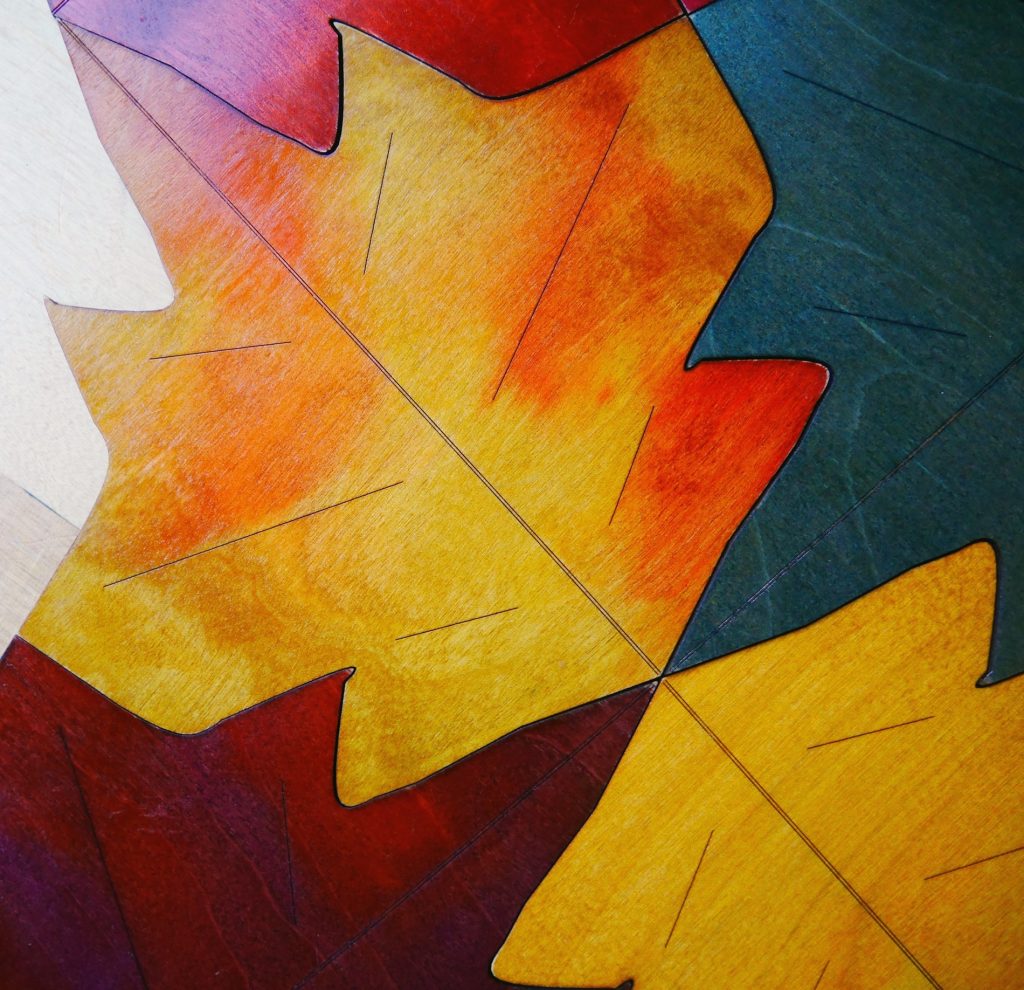
Making may not always be glamorous, but the beauty of the finished product is well worth the effort.
Her advice to other makers? “First, find a compelling design, she says. “Next, elevate your product by further customizing it after it’s made. I highly recommend experimenting with dyeing wood!”
For more about Jane and a behind the scenes look into Quirkshop Designs, follow her on Instagram or visit her website.
